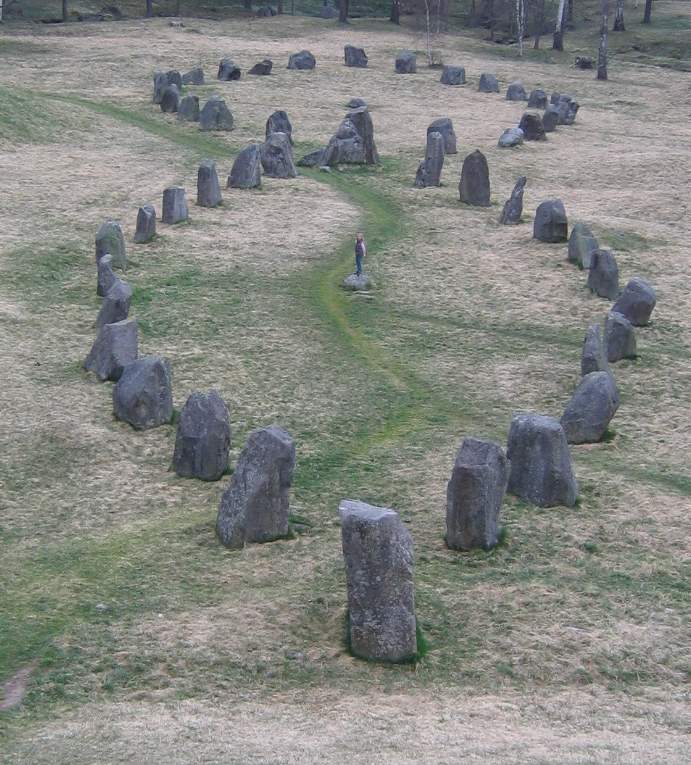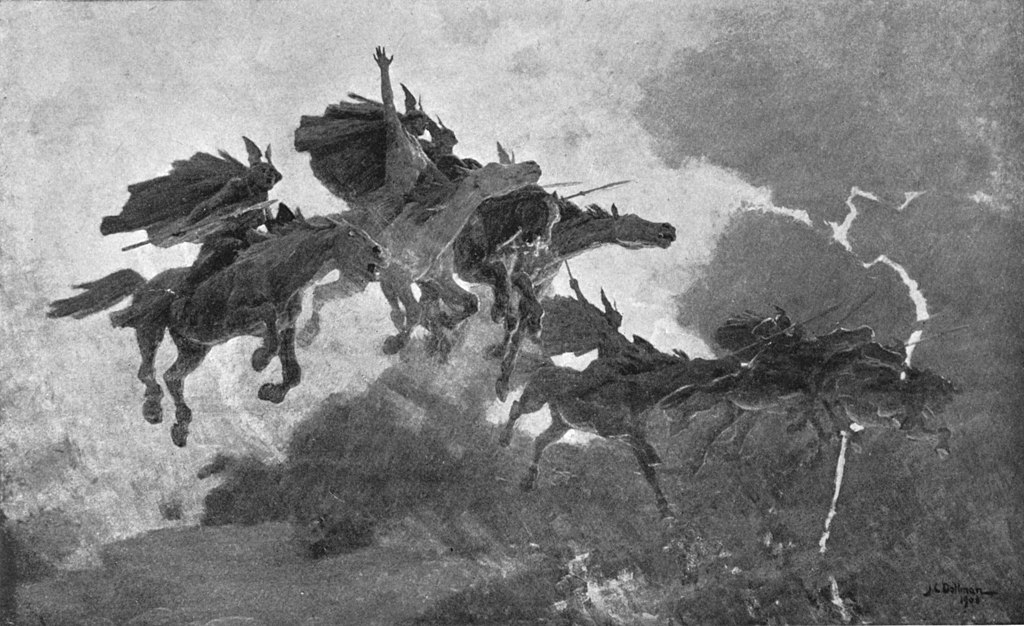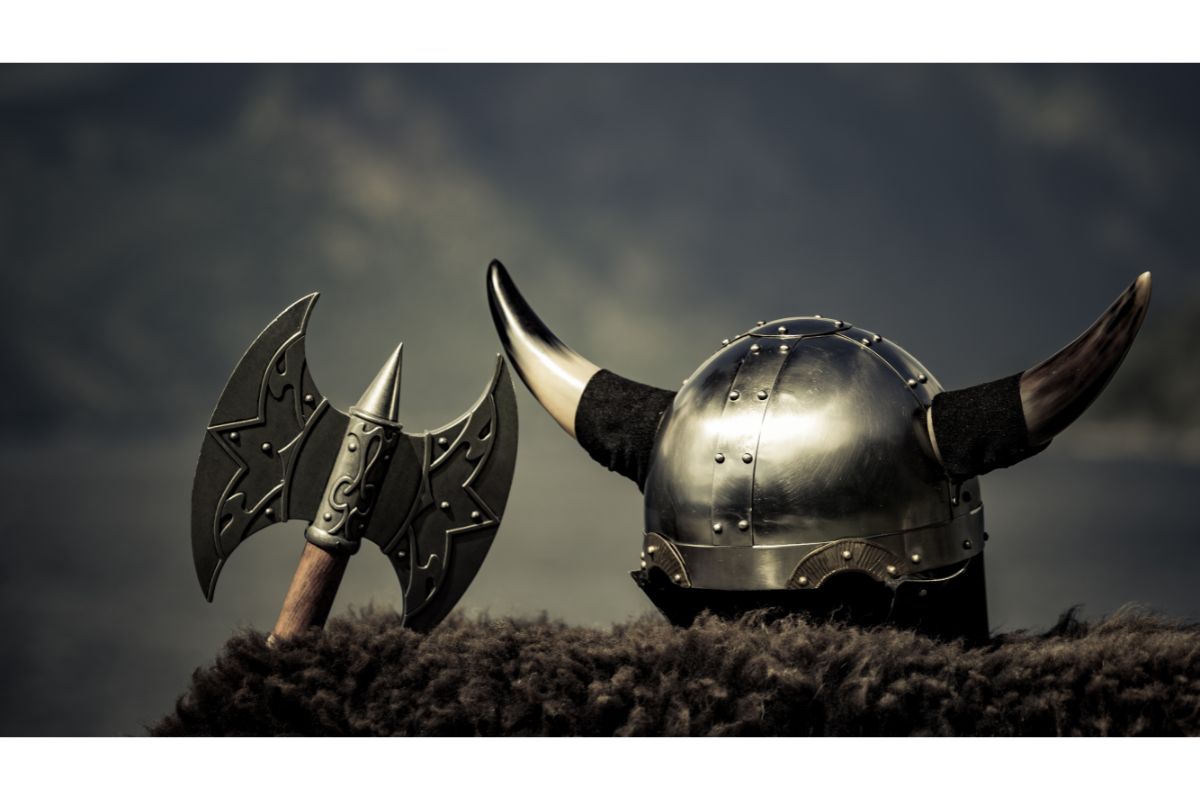No definitive record of what happened to deceased Viking gods, goddesses, mortals, and animals exists in pre-Christian Scandinavian literature. However, plenty of unconfirmed but colorful rumors about Valhalla, Hel, and Fólkvangr appear, not to mention the four parts of a Norseman and woman’s soul that continued to the afterlife after their owner had died.
In this article, we investigate the reasons the deceased of the Viking age ended up in a particular place and how a body passed into the afterlife.
Understanding the Nordic Pagan Religion
Norse paganism originates in the old Norse religion practiced in Scandinavia before Christianity appeared.
Germania was what the Romans called the area east of the Rhine, and it was here that Germanic paganism originated, producing variations like Norse paganism. The early Germanic religious culture was influenced by the Celtic one.
Anglo-Saxon paganism drew heavily from the Norse variety and worshipped gods with similar names like Woden (Odin), Thunor (Thor), and Tiw (Tyr).
Indeed, the religions of pagan Europe tended to feature the same characteristics, namely polytheism, recognition of female deities, and a consideration of the divinity of nature. Old Norse paid particular attention to the role of the afterlife in their religious beliefs.
How Funerals Worked
Vikings often buried the dead alongside their possessions. These objects could be jewelry, clothes, household ornaments, or tools. Large objects such as weapons, armor, and furniture accompanied their owners to the afterlife.
Cats, dogs, and horses were among the animals often cremated or buried with the deceased.
The Fear of Draugs
The Vikings had a respect for death and took burial or cremation seriously. Interments were deliberately thorough so that the deceased would have no chance of leaving the grave after burial. The sighting of a reanimated corpse or “draug” would be a dreadful omen and a sign that the death of other family members was imminent.
The Prose Edda, by the Icelandic politician, historian, and poet Snorri Sturluson, describes how family members would remove fingernails and toenails from corpses so they could not complete the construction of the Naglfar (“ship of human nails”). This ship would carry Loki and the giant Hrym during Ragnarök, the Norse end of the world.
![Norse Afterlife: What the Vikings Believed In 2 The Nørre Nærå Runestone is interpreted as having a "grave binding inscription" used to keep the deceased in its grave.[72]](https://norsemythologist.com/wp-content/uploads/2022/11/Norre_naeraa_600px.jpg)
Ship Burial Sites
Ship burial rituals were relatively frequent, with the corpse placed in a boat and buried with sacrificed slaves and possessions.
The degree of time spent, the materials used, and how elaborate the ritual was depended on the deceased’s social status. Some burial mounds resembled ships and used stones and rocks to show the boat outline.

One of the best-known pre-Christian Norse traditions was the burial mound. Thousands exist across Sweden, Norway, and wherever the Vikings settled. Again, their size depended on the wealth and social status of the deceased.
If a pyre was part of the ceremony for the deceased, it was essential to burn possessions (grave goods) and sacrifices together with the body.
What Determined Someone’s Fate in the Afterlife?
The Norse gods and goddesses decided the fate of a soul after they passed on.
Norse mythology dictated that a person’s soul is the only part of a body that goes to the afterlife. Therefore, Viking society put great stock in lives lived with dignity, nobility, and honor, so much so that it could influence your final resting place after death.
The Relation Between the Soul and the Afterlife
After death, the soul split into four parts, but not all went into the afterlife. Legend stated that some sections became a part of a newly born body, usually a relative.
According to Old Norse literature, the soul had four components:
- Hamr: “Skin” or “shape,” i.e., your physical appearance. Shapeshifters were called “hamrammr“ in Old Norse.
- Hugr: “Mind“ or “thought,” i.e., your personality and character. The hugr could leave the body while the person was asleep or in a trance, often in the form of an animal. Waking the person up or interrupting the reverie would return the hugr to the host’s body. Hugr would continue into the afterlife after the person’s death.
- Fylgja: A spirit being or animal that lived outside the body. It usually took the form of an animal or woman connected to the host’s personality, destiny, or luck in life. A warrior might have a wolf or a bear as its fylgja. A fylgja is only visible to certain people and may transfer to another person after death, usually a family member.
- Hamingja: “Luck.” The hamingja was a female guardian spirit responsible for a person’s luck and well-being. This trait could also pass on to other people, especially a family member with the same name.
The hugr was the only part of the soul that continued into the afterlife, although all the components played some role in the legacy the deceased person left.
Viking life decided the soul could only undertake the journey to the realm of the dead when the body had disappeared due to cremation or decay.
Where Did the Deceased Vikings Go According to Their Beliefs?
Hel
Hel was the resting place for those dying of natural causes, including murderers, adulterers, and oath-breakers. It lay at the bottom of the world in or near Niflheim.
The god Odin appointed the goddess Hel, the daughter of Loki, as its ruler.
The Poetic Edda describes how Brunhilde traveled to Hel after committing suicide (or was killed; the sources differ) over the death of her love Siegfried. Odin rode to Hel on his eight-legged Sleipnir. The Prose Edda describes the failed retrieval of Odin’s son Baldr by his brother Hermóðr, who used Sleipnir to help him. Baldr and his brother Hodr returned from Hel after Ragnarök.
Nastrond (or Nástrǫnd) was an area of Hel where Nidhogg the dragon ate the corpses. Nidhogg is also known for chewing the roots of the World Tree, Yggdrasil.
Valhalla
In Norse mythology, Einherjar are male warriors who died a noble death in battle – Ragnar Lothbrok, for example. Valkyries then slung them across their horses and carried them to Valhalla in Asgard, where they would feast and prepare to fight for the Æsir as part of Ragnarök.
In Valhalla, the Einherjar warriors ate meat from the wild boar Saehrímnir, which replenished itself every night and the Valkyries served them mead from the udder of the goat Heiðrún.
Becoming an Einherjar wasn’t necessarily the preserve of noble warriors. Any criminal, wrongdoer, miscreant, or low life could end up in Valhalla as an Einherjar. It was not how you lived that mattered; it was how you died.

Fólkvangr
Fólkvangr (or field of warriors in Old Norse) was the afterlife location of half the Æsir warriors that died in battle (the other half would go to Odin at Valhalla). The Vanir goddess Freyja (or Freya) was the guardian and lived in a hall called Sessrúmnir.
In the poem Grímnismál from the Poetic Edda, Grímnir (Odin in disguise) told Agnar, Frigg’s foster son, the following:
The ninth is Folkvang,
Grimnismal – Germanic Mythology
where Freyja decrees
Who shall have seats in the hall;
The half of the dead each day does she choose,
And half does Othin have.
In chapter 24 of Gylfaginning from the Prose Edda, Hár (Odin once again in disguise) tells Gangleri (King Gylfi in disguise) that Freyja is: “the most glorious of the ásynjur”; she is the ruler of a hallowed hall called Fólkvangr,” and “whenever she rides to battle she gets half of the slain and the other half Odin.” High then describes Sessrúmnir.
The Giantess Rán
Those who died at sea ended up in the underwater resting place ruled by the giantess Rán.
Rán has associations with theft, and stories of her pulling living seafarers into her watery abode also appear.
Other locations for marine afterlife also exist. The Eyrbyggja Saga describes how Þorsteinn Þorskabítr and his crew die while on a fishing expedition but enter Helgafjell and not the realm of Rán.
What About Women and Children?
It is not chronicled if there was a specific resting place in the afterlife for women and children. However, there are strong hints that Valkyries ended up in Valhalla.
Hel is the destination for those dying of old age or disease, so perhaps that is where non-warriors journeyed after they died. Fólkvangr is another possible destination, as it is unclear if that location is exclusively for warriors.
Those dying at sea ended up in the underwater realm of Rán.
Related Literature
For a comprehensive study of how the Old Norse viewed the afterlife, Hilda R. Ellis Davidson published The Road to Hel: A Study of the Conception of the Dead in Old Norse Literature in 1968.

